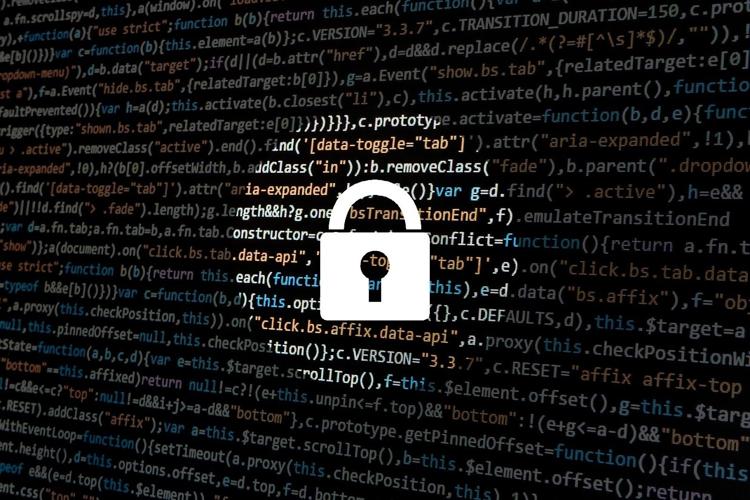Endpoint security aims to protect organizational data against sophisticated cyber threats. As remote work continues to gain momentum, the number of endpoints entering the corporate network has surged. These endpoints include laptops, desktops, mobile phones, and tablets. Each of these devices poses a potential entry point for cybercriminals.
Learn more about the key components involved in effective endpoint security solutions for comprehensive protection. Organizations must implement a multi-layered security approach, incorporating various technologies and practices designed to mitigate risks and improve security posture. Keep reading to learn more.

What is Endpoint Security?
Endpoint security refers to the strategies and mechanisms used to secure endpoints on a network, collectively protecting an organization's sensitive data. To know more about how to strengthen your defenses, discover what is endpoint security and its benefits in more detail. Threat prevention, detection, and response are some of the layers incorporated into endpoint security solutions. A well-rounded endpoint security strategy comprehensively addresses potential vulnerabilities by utilizing antivirus software, firewalls, data encryption, and intrusion detection systems. With each device constituting a unique target, a robust approach minimizes the risk of unauthorized access and data breaches.
Organizations must prioritize endpoint security as a component of their security strategy if they want to combat these looming threats. Investing in endpoint security solutions safeguards assets and creates a culture of cybersecurity awareness among employees.
Multi-layered Security Approach
A multi-layered security strategy combats the diverse array of cyber threats that organizations face today. It develops multiple security measures that work together synergistically to guard against a wide range of malicious activities. Each layer addresses different security facets, including malware detection, network security, and access control. Endpoint security should encompass real-time monitoring and endpoint detection and response (EDR) to identify potential threats before they escalate into critical breaches.
The integration of artificial intelligence (AI) within endpoint security solutions can improve threat detection. AI algorithms analyze vast amounts of data to identify anomalies that may indicate malicious activity. Organizations can now reduce the time it takes to identify and mitigate risks, improving their security posture. Security teams can focus on higher-value tasks while AI manages routine monitoring. A layered security model calls for redundancy, as each layer provides an extra defense line. Should one layer fail or be bypassed, others remain to protect critical assets.
Endpoint Detection and Response (EDR)
Endpoint Detection and Response is an element in modern endpoint security solutions. EDR provides real-time monitoring and analysis of endpoint activity. It allows security teams to detect, investigate, and respond to threats more effectively. EDR solutions gather endpoint data and use advanced analytics and machine learning to identify suspicious behavior, distinguishing legitimate user activity from potential attacks.
The key benefits of EDR are its ability to provide visibility into endpoint activity across the network. Security professionals can investigate incidents in greater detail and identify the root causes of breaches. EDR improves incident response capabilities by automating remediation processes. Security teams can focus on strategic objectives so that endpoint vulnerabilities are addressed on the spot.
Data Encryption and Protection
Data encryption encompasses the processes and technologies used to encode sensitive data to prevent unauthorized access. Even if a device is compromised, stolen, or lost, the information remains inaccessible without the appropriate decryption keys. Robust encryption protocols protect data both in transit and at rest and maintain compliance with industry regulations such as GDPR and HIPAA.
Strong access controls can add to the data protection efforts. Organizations should adopt role-based access controls (RBAC) that limit data access based on users’ roles within the organization. This practice lowers the risk of unauthorized data access and can successfully mitigate the insider threat. A comprehensive data protection strategy involves training employees about data handling best practices. Businesses can decrease human errors that result in data breaches or losses. When employees understand the importance of safeguarding sensitive information, they can adopt secure practices consistently.
Regular Updates and Patch Management
Both hardware and software require updates to fix vulnerabilities that cybercriminals may exploit. Failure to keep software and systems up to date can lead to severe security breaches that compromise the entire network. An automated patch management system allows organizations to keep their devices updated at all times.
An automated system reduces the manual effort required to deploy patches and mitigates potential security risks associated with human error. Organizations should establish a structured patch management workflow as part of their endpoint security strategy. All endpoints, including peripheral devices like printers and IoT devices, should be regularly updated to create a more resilient security environment. Cybercriminals target these less-protected devices to gain unauthorized access to networks. Robust patch management can safeguard these endpoints against attacks.
Employee Training and Awareness
Many security breaches occur as a result of human errors. The most common ones are falling victim to phishing scams or inadvertently sharing sensitive data. Organizations that choose to educate employees on common cyber threats and safe online practices can reduce the likelihood of security incidents. Regular training sessions can reinforce the importance of security within the company culture.
Role-playing scenarios and simulated attacks enable employees to recognize suspicious activities and respond appropriately. Providing resources for employees to stay informed about threats demonstrates the organization's commitment to cybersecurity. Encouraging open dialogues around security concerns promotes an environment of vigilance and empowerment. Well-informed employees are the first line of defense in safeguarding organizational assets and data against cyber threats.
Compliance with Regulations
There are many regulations out there (GDPR, HIPAA, and PCI DSS), each imposing specific requirements for data security. Organizations should assess their security measures against these standards and meet compliance obligations. Failure to comply can result in severe penalties, including substantial fines and reputational damage. Regular assessments and audits can verify compliance.
Organizations should establish documented processes for data handling, storage, and transmission in a way that their endpoint security strategies reinforce these controls. Continuous monitoring can identify gaps and areas for improvement. A well-documented response plan outlines the steps to take during an incident, including notifying affected parties and regulatory bodies. Being prepared can mitigate the repercussions of a breach and demonstrate accountability.

Effective endpoint security solutions encompass various key components to maintain robust defenses against cyber threats. Organizations can now position themselves to combat cyber threats. Taking a proactive stance in these areas reduces risks and empowers businesses to thrive today.



(0) comments
We welcome your comments
Log In
Post a comment as Guest
Keep it Clean. Please avoid obscene, vulgar, lewd, racist or sexually-oriented language.
PLEASE TURN OFF YOUR CAPS LOCK.
Don't Threaten. Threats of harming another person will not be tolerated.
Be Truthful. Don't knowingly lie about anyone or anything.
Be Nice. No racism, sexism or any sort of -ism that is degrading to another person.
Be Proactive. Use the 'Report' link on each comment to let us know of abusive posts.
Share with Us. We'd love to hear eyewitness accounts, the history behind an article.